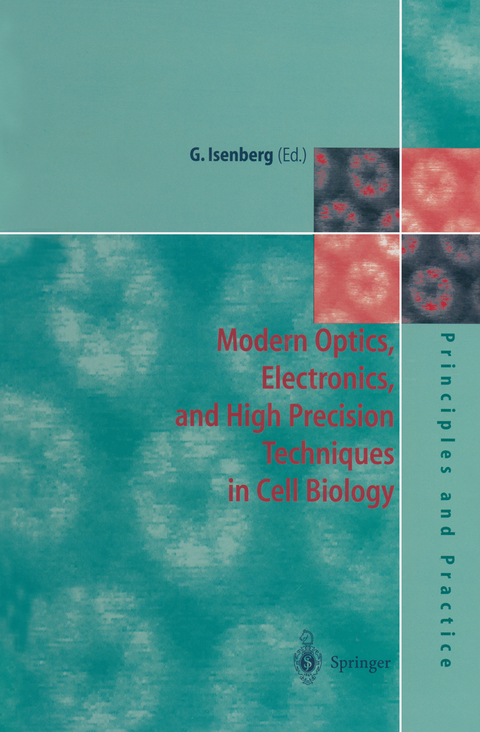
Modern Optics, Electronics and High Precision Techniques in Cell Biology
Springer Berlin (Verlag)
978-3-642-80372-7 (ISBN)
Fundamental cellular processes such as movement, development or communication can be analysed with the high precision biophysical techniques described in this work.
1 Atomic Force Microscopy Provides Molecular Details of Cell Surfaces.- 2 Basic Principles and Applications of Confocal Laser Scanning Microscopy.- 3 Visualization of Neuronal Form and Function in Brain Slices by Infrared Videomicroscopy.- 4 Time-Resolved Imaging of Membrane Potentials and Cytoplasmic Ions at the Cellular Level with a 50x50 Fiber Array Photodiode Camera.- 5 Micromanipulation of Macromolecules: How to Measure the Stiffness of Single Microtubules.- 6 Dynamics of Single Protein Polymers Visualized by Fluorescence Microscopy.- 7 The Interaction of Proteins with Membrane Surfaces at Molecular Resolution: The Neutron Reflection Method.- 8 The Study of Fast Reactions by the Stopped-Flow Method.- 9 Biomolecular Interactions Analysis (BIA Technology). A Universal Biosensor-Based Technology for Biochemical Research and Development.- 10 Measuring Cellular Locomotion Forces with Micro-Machined Substrates.- 11 Viscoelasticity, Rheology and Molecular Conformational Dynamics of Entangled and Cross-Linked Actin Networks.
| Erscheint lt. Verlag | 19.1.2012 |
|---|---|
| Reihe/Serie | Principles and Practice |
| Zusatzinfo | VIII, 261 p. 77 illus., 14 illus. in color. |
| Verlagsort | Berlin |
| Sprache | englisch |
| Maße | 155 x 235 mm |
| Gewicht | 422 g |
| Themenwelt | Naturwissenschaften ► Biologie ► Biochemie |
| Naturwissenschaften ► Biologie ► Mikrobiologie / Immunologie | |
| Naturwissenschaften ► Biologie ► Zellbiologie | |
| Schlagworte | Atomic force • Biology • Biophysics • Biophysik • Biosensor • biosensors • Cell • Cell Biology • cellular processes • flow cytometry • infrared microscopy • Laser • Laser scanning • Membrane • Microscopy • Mikroskopie • neuron reflection • Protein • Regeneration • viscometry • Viskositätsmessung |
| ISBN-10 | 3-642-80372-5 / 3642803725 |
| ISBN-13 | 978-3-642-80372-7 / 9783642803727 |
| Zustand | Neuware |
| Haben Sie eine Frage zum Produkt? |
aus dem Bereich


